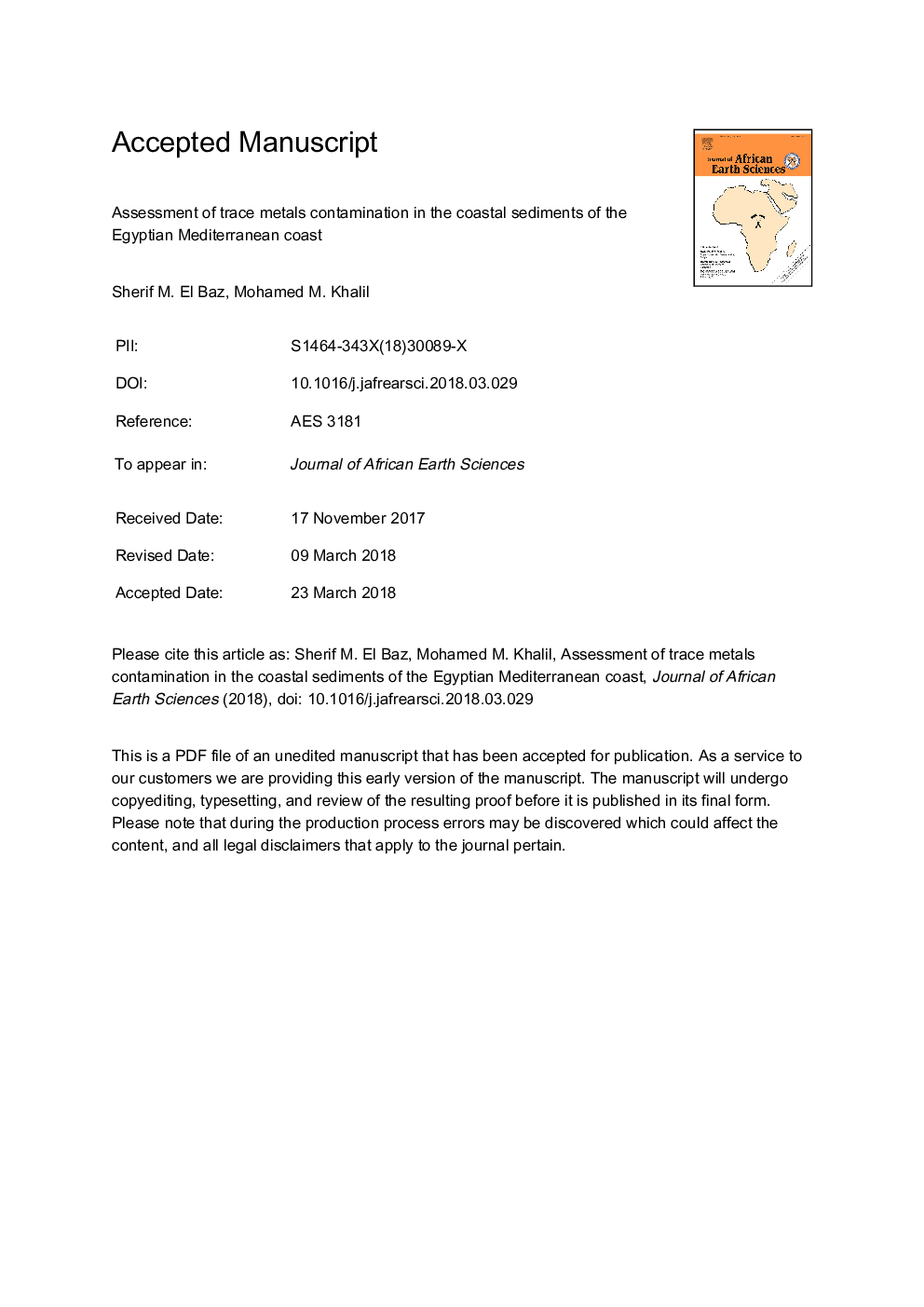| کد مقاله | کد نشریه | سال انتشار | مقاله انگلیسی | نسخه تمام متن |
|---|---|---|---|---|
| 8913466 | 1640165 | 2018 | 22 صفحه PDF | دانلود رایگان |
عنوان انگلیسی مقاله ISI
Assessment of trace metals contamination in the coastal sediments of the Egyptian Mediterranean coast
ترجمه فارسی عنوان
ارزیابی آلودگی فلزات ردیابی در رسوبات ساحلی ساحل دریای مدیترانه مصر
دانلود مقاله + سفارش ترجمه
دانلود مقاله ISI انگلیسی
رایگان برای ایرانیان
کلمات کلیدی
فلزات کمیاب، رسوب، شاخص های آلودگی، ساحل دریای مدیترانه، مصر،
موضوعات مرتبط
مهندسی و علوم پایه
علوم زمین و سیارات
زمین شناسی
چکیده انگلیسی
Trace metals contamination has been recently increased in the Egyptian Mediterranean coast owing to the nearby anthropological activities. This investigation aimed to detect the concentrations of six different trace metals (Fe, Mn, Cu, Cd, Pb and Zn) in surface sediments from the central part of the Egyptian Mediterranean coast, and to assess their state of contamination from different indices and risk factor calculations. Mean concentrations of Cu, Pb and Zn were lower and the mean concentration of Cd was higher compared to the background values. The assessment of pollution was mainly based on the contamination indices. Based on the contamination factor, Pb was the most enriched element followed by Cd, Mn, Zn and Cu. Most of the sites show low contamination with respect to Pb, Mn, Cd, Fe, Zn and Cu. The pollution load index also suggests that all the coastal sediments are unpolluted. According to the geoaccumulation index, the sediments were classified into unpolluted with Mn, Cd, Fe and Pb, and unpolluted to moderately polluted with Pb. Risk evaluation revealed that Cd had the greatest ecological risk, followed by Pb, Cu, Mn, while Zn had the lowest risk. With the aid of statistical methods, the origin of metals is classified into two clusters (A and B). Group A consists of Fe, Mn and Cu, whereas group B contains Zn, Pb and Cd. In the first cluster Fe and Mn are joined to each other at a positive and significant similarity (0.68). Fe is recognized as an indicator of lithogenous origin, therefore, its higher similarity with Mn may be indicative of the similar origin for Manganese. In the second cluster Pb and Zn are joined to each other at a positive and significant similarity (0.80). Pb is recognized as an indicator of anthropogenic origin, therefore, its higher similarity with Zn may be indicative of the similar origin for Zinc.
ناشر
Database: Elsevier - ScienceDirect (ساینس دایرکت)
Journal: Journal of African Earth Sciences - Volume 143, July 2018, Pages 195-200
Journal: Journal of African Earth Sciences - Volume 143, July 2018, Pages 195-200
نویسندگان
Sherif M. El Baz, Mohamed M. Khalil,
